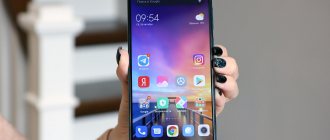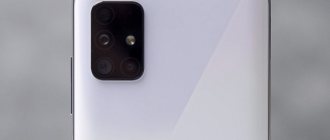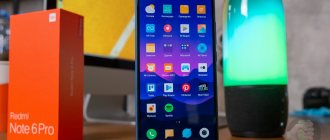Xiaomi is trying its best to move from brands in the category “yes, I’ll buy an analogue from Ali for cheap” into the bright world of official sales, offline stores and, perhaps, even the cessation of patent problems. But on this logical path there was an obstacle that seemed insurmountable - the colossal difference between the price of “gray” products imported directly from China and those sold here officially. Last year, the company tried to combat this by causing interference at customs, but soon abandoned this, faced with both the insufficient effectiveness of this measure and reputational problems. And it seems she has taken a new course.
Xiaomi Mi 8, which officially appeared in Russia in August, costs from 30 to 33 thousand rubles depending on the version (64 or 128 GB of flash memory), which is not so noticeably different from the prices of “gray” suppliers - while there is official warranty and global firmware. This looks more like the right direction. The main thing is that the gadgets themselves, as before, do not fail.
Mi 8 is a classic flagship Xiaomi smartphone: a powerful hardware platform, a complete collection of all key trends and a direct inheritance of its external design from the current iPhone. The experiments inherent in the Mi MIX series bypassed him. Will the fresh Mi have enough traditional values to become a hit again?
Set
The box has a new design again - now in black. Although, perhaps, the manufacturer only equips top-end devices with such boxes. Mid-range and budget models are still supplied in red packages. But that's not the point.
Despite the festive box, everything inside is boring and banal. USB C cable, pin for SIM card tray (Micro SD not supported), power supply (5V - 3A / 9V - 2A / 12V - 1.5A), adapter for 3.5 mm audio port, ultra-cheap silicone case and film to the screen. Yes, the one that sells for 5 cents per kilogram. I got the latter not from Xiaomi itself, but from the seller. By the way, I ordered my Mi-8 here.
Design
I would like to draw the attention of those who are looking closely at the device and are still sitting on some compact Xiaomi Mi5.
Forget about miniature. Mi 8 is such a shovel!
The smartphone, firstly, is large in itself. Thanks to the huge 6.21-inch screen. Secondly, the body has noticeably elongated in height. And the reason for this is again the screen with a side geometry of 18.8 by 9.
In addition, it never has minimal frames. The Mi-8 is very similar to the Huawei P20 Pro. From the front it is generally the same smartphone. There is the same protrusion on top (can be hidden in the settings), and the top frame is slightly thicker than the side ones, just like in Huawei.
There is also a lower chin, and it is quite wide. Therefore, there can be no talk of any competition in terms of framelessness with the iPhone X.
But from the back the devices are very, very similar. Especially the white version. And for some reason it seems to me that this did not happen by chance.
Our hero is only identified by the inscription “mi” and a fingerprint scanner, which is completely unnecessary in this device. I'll tell you why later.
iPhone X
And now about the negative. I found exactly two unpleasant moments.
The first one is probably obvious - the smartphone is very slippery.
Introducing him to asphalt and tiles is easy. So buying a thicker protective case is a strictly mandatory precaution.
The second nuance is that the bezel of the rear cameras is scratched.
I've been using the smartphone for two days, and the lower part of the edge is already scratched into trash. It's scary to imagine what will happen next. In general, another argument in favor of purchasing a case for Xiaomi Mi 8 soon.
What about the colors? There are a whole bunch of colors found in living nature: black, gold, white and blue. To my taste, the last two look the most interesting. The first a la iPhone X for the poor. Personally, that's why I bought it. The second one is much more original, because it comes with a deep blue back cover. It's better to take it! Don't buy black, the most boring color.
The advanced version or Mi 8 Explorer Edition comes with a transparent cover. Everyone thought that the insides of the device were visible underneath, but it turned out that it was a simple sticker, a fake, or simply zilch. It didn't turn out very nicely.
Mi 8EE
Is it enough to just clone an iPhone X?
The design of Xiaomi Mi 8 is a compromise between obvious copying of the iPhone and the company’s own style. In my opinion, this solution is very successful. The front side is similar to the “ten” only with the famous cutout on top of the display, and the rest of the elements look the same as on other Xiaomi devices.
The back side only confirms the first impression. The manufacturer uses glass again. The same goes for the positioning of the Mi logo. On the contrary, there are two decisive features that prove to us that this is a device of 2022. The dual camera is positioned vertically in the top left corner, with a flash between the sensors. The fingerprint sensor is now also located on the back, whereas the previous model in the range had it on the front.
There is a metal frame between the front and rear glass. On the right side there is a power button and a volume rocker, on the left there is a slot for two Nano-SIMs, and at the bottom between the two speakers there is a USB Type-C connector. The build quality is typical for Xiaomi - perfect.
In terms of dimensions, Xiaomi Mi 8 is slightly larger than Mi Mix 2S. But there is also a larger display, although it weighs 18 grams less. However, the differences are very slight. Due to the rounded long sides, the Mi 8 fits well in the hand, but is not as comfortable as the previous Mi 6.
Xiaomi Mi 6 is much smaller than the new Xiaomi Mi 8.
Here you must decide what is more important to you: a large screen or compactness. On the other hand, the dimensions of the new product are the largest of all the company’s smartphones.
Is your unibrow annoying?
The main hit of Chinese smartphones in 2022 is borrowing a cutout on the top of the display, like the tenth iPhone. No other “feature” was copied like this, although for Apple it was actually a necessary measure to put a camera, speaker and sensors in a frameless smartphone. And now the unibrow has become a distinctive feature for Chinese flagship smartphones. Like others, Xiaomi has placed a front camera there, and a very good one at that. There are also proximity and light sensors, a speaker and other elements.
Of course, as is the case with other smartphones, you could simply place many of the components at the top end or under the screen to avoid the need for a notch. But the company wanted to offer a smartphone with the largest possible display area. A unibrow may irritate you at first, but you quickly get used to it.
The screen on either side of the notch contains only time information, battery level and a wireless connection indicator. Xiaomi has adapted the MIUI shell well, so everything looks very aesthetically pleasing. Of course, not all applications support the notch, so it is possible to temporarily disable the top part of the display to display information correctly. There is also an option to turn off the protruding part of the screen by default.
Display
As far as I remember, this is Xiaomi’s third experiment with AMOLED screens. Previously, such matrices were installed in Xiaomi Mi Note 2 and Redmi Pro. Correct me in the comments if I missed something. And now we get a new product - Mi 8 with a Super AMOLED display.
There is little that can be said about him.
This is a top matrix in all respects, supports the DCI-P3 profile, HDR10 and all that stuff.
A huge supply of brightness (up to 600 nits), incredible contrast (60,000:1), deep blacks, no green, like in Samsung devices - what more could you want?
Is there an Always On function? And she is here. However, when the screen is turned off, only the time and date are displayed. But you can set up work according to a schedule. Apparently, in order to save energy.
Mi 8 (left) and MIX 2S (right)
What is this icon that appears in the upper left corner? This little thing allows you to instantly turn on/off the “ears” around your protruding bangs. It’s convenient and you don’t have to go into the settings every time, if specifically in this application you need to cut out your unibrow.
Face unlock
Xiaomi Mi 8 Explorer Edition is the second after the iPhone X and the world's first Android smartphone that has separate modules for recognizing a friendly face, and which does not use the front camera for this.
The Mi 8 Explorer Edition has a dot projector that puts a matrix of dots on the face, and next to it there is a sensor that reads these same dots. The result is a truly voluminous and very detailed digital cast of the face, which is almost impossible to fake.
However, I had at my disposal a regular Mi 8, which has simpler Face Unlock sensors. The smartphone uses an additional infrared camera and an infrared projector located nearby. The technology is also decent, but in comparison with the flagship chip it is not so secure.
In any case, entering a face into memory is very fast. Face unlocking is instant, and it works in any lighting conditions, including complete darkness.
You can block your face with your palm from nose to chin, cover one half of your face - the smartphone will still recognize the owner. The main thing is that at least one eye is visible and it is open.
Against this background, it is generally unclear why a fingerprint scanner is needed here. After all, Face unlock works simply amazing!
By the way, the EE version does not have a fingerprint scanner. Or rather, it is not on the back, but it is built into the display. Another killer feature that makes you want to pay extra. Well, at least I want to. Would you pay extra?
The camera really surprised us, in a good way
To our surprise, the camera on this device is very good. It's not super rich like the cameras in Samsung and some other smartphones, but we were completely satisfied with the clarity and dynamic range of the Xaiomi Mi 8's camera. During testing, I took a huge number of photos and the smartphone performed well in almost every situation. The portrait mode using the rear cameras still leaves a lot to be desired, but the portrait mode on the selfie camera added in MIUI 10 works very well indeed.
An infrared sensor is hidden inside the bangs, which allows you to unlock your smartphone by scanning your face even at night. We've only seen this on the iPhone and Oppo Find X, so it's a great addition to the device. It's worth noting that to use this unlocking method, you need to select China as your region.
As you can see from the examples above, sharpness and dynamic range are excellent. The camera is very reminiscent of the iPhone X, which doesn't have much contrast but instead focuses well on tonality. It tends to overexpose images a little, but I solved this problem by lowering the exposure manually.
Characteristics of Xiaomi Mi 8
It is logical to compare the current generation with the previous one. Everything is on the sign under the cut. Be sure to go through the specs to understand the current state of affairs.
| Hidden text | SelectExpand> | |||||||||||||||||||||||||||||||||||||||||||||||||||||||||||||||||||||||||
| ||||||||||||||||||||||||||||||||||||||||||||||||||||||||||||||||||||||||||
⇡#Camera
Xiaomi Mi 8 has the same main camera module as Mi MIX 2S. That is, on the one hand, we are already familiar with him, on the other, our past acquaintance can hardly be called complete. What is a mobile camera without software - and in the review, our Mi MIX 2S had a “pure” beta of Android 9.0 Pie. So this acquaintance can be called the first full one.
Mi 8 uses a dual-camera rear module: a 12-megapixel main Sony IMX363 sensor (pixel size - 1.4 microns) with an ƒ/1.8 aperture lens and an optical stabilizer, plus an additional one with the same resolution, but a smaller pixel size and aperture lens already ƒ/2.4.
| Examples of shooting with two rear cameras of Xiaomi Mi 8. On the left is the wide-angle camera, on the right is the main one | ||
The "portrait" method of using a dual module is used, but it can also be used for a rudimentary 2x optical zoom. More precisely, a hybrid one - the actual focal length specified in EXIF differs by a quarter, and not twice. The image is already “twisted” programmatically - this is a common method that inevitably leads to some drop in the quality of photographs when shooting in a “telephoto” position. However, it’s not so noticeable if you shoot in normal lighting - the detailing is quite good (including due to the software enhancement of contour sharpening), the color rendition is in order, as is, in principle, the dynamic range. In the dark, the situation gets much worse - primarily due to the lower aperture ratio and the lack of an optical stabilizer.
The main option for using the additional rear camera remains, of course, portrait mode - in it, in addition to a longer focal length, software background blur is added, as well as a skin smoothing system (which cannot be turned off). These software bells and whistles work a little crudely, but in general the portraits (especially women’s) look good. At the official presentation of the smartphone, Xiaomi promised special portrait modes with studio lighting simulation - similar to those we saw, for example, in the Huawei P20 Pro or Honor 10 - but they are not available in the current firmware version.
| On the left is an example of shooting without the use of artificial intelligence, on the right - with artificial intelligence. Pay attention to the richness of the colors, especially noticeable in the sky | ||
Another important feature of the camera, which appeared for the first time on the Mi 8, is artificial intelligence, without which today it’s somehow awkward to release a smartphone with a serious status. Xiaomi has avoided this awkwardness and inserted an AI icon into the camera app. When you press it, the smartphone tries to recognize the scene and adjust the picture to it. I didn’t have the opportunity to check the last statement, but most likely nothing like that will happen: the smartphone simply increases the color saturation, makes the picture a little warmer or cooler depending on the situation - and, perhaps, that’s all. “Intelligence” doesn’t work roughly, but it doesn’t add any zest to the pictures either. This is more of a fashion statement than a really useful thing.
| Xiaomi Mi 8 camera interface | ||
The camera interface itself has not changed in any way compared to what we saw, for example, in Redmi Note 5. Even the list of available modes is the same: from video clip to panorama. And in manual mode, the image again does not change when changing settings - as if you were shooting on a DSLR with an optical viewfinder, and not on a smartphone, in which such a preview is more than natural. The only thing that reminds us of the special status of Mi 8 is the AI icon. It should also be noted that by default the smartphone puts “watermarks” on pictures, indicating that the picture was taken specifically on Xiaomi Mi 8 - do not forget to disable this in the settings. In general, of course, you can’t do this - you want to shame the developers.
Sample photos
View all images (23)In general, about the quality of photography on the Xiaomi Mi 8, one can only repeat what was said about the two rear cameras: everything is good during the day, everything is not very good at night. Due to the good aperture ratio and stabilizer, it is possible to shoot a night scene without blur, even at a fairly long shutter speed (there is a scene in the gallery, shoot with a shutter speed of half a second - albeit with your hands resting), the white balance, if you do not turn on AI, is determined more or less right. But the picture is noticeably blurry - noise reduction works very actively, and there may also be problems with edge sharpness. Be that as it may, the Mi 8 performs very well as a camera – Xiaomi is gradually learning to work in this area.
With video shooting, everything is also very decent - there is support for 4K resolution with a frequency of up to 30 frames per second, slow-motion video in Full HD with a frequency of up to 240 frames per second. There is a very effective stabilization system. The sound recording quality is somewhat disappointing, but almost everything here does not shine (the only one that stands out is the HTC U12+).
The front camera is also quite decent - 20 megapixels, ƒ/2.0. And even though there is no flash or autofocus, this does not particularly affect the perception of the module. High resolution (and, accordingly, the small size of an individual pixel) does not prevent you from obtaining self-portraits of good quality, even in low light. There is, of course, a system for “improving” the face, which is customizable according to various parameters: in addition to smoothing the skin, you can change the size of the eyes or “pout” the lips. Or you can turn off the “beautifier” altogether.
Performance
This time it will be the shortest section of the Xiaomi Mi 8 review.
We have before us a very, very fast smartphone.
Applications launch at lightning speed, switch instantly, games run at maximum frequencies. World of Tanks Blitz, PUBG Mobile - the frequency simply hangs at the upper limit of 60 FPS.
In general, we have before us a real flagship of 2022 with a capital F. Without any compromises!
Software
There is no global firmware yet, so we only use the official one created for China. It has only English language and the ability to easily install Google services through the Mi Store. Synchronizing accounts, mail, calendars, contacts and installing any applications - everything works without problems.
Globalization is not yet looming on the horizon. However, the likelihood that Mi 8 will hit the international market is maximum. So you either need to be patient and wait, or order Xiaomi Mi 8 from China right now and then, if necessary, switch to the international version of the firmware yourself.
From little things.
I really liked the vibration response. He is soft, sensitive, with a pronounced noble vibration. Of course, it doesn't reach the level of the Taptic Engine in the iPhone. More reminiscent of the br-brrr in the Google Pixel 2 XL. It's great that it also works in third-party keyboards - for example, Gboard.
On my Chinese version of Xiaomi Mi 8, payments via Google Pay refused to work.
The application complained that the phone either had a root or was simply not designed for this option. Although the Yandex app read the Troika metro map without problems.
And one more thing. After the global firmware is released, it can be installed on a smartphone only with an unlocked bootloader (you need to do it yourself). Once the bootloader is unlocked, you can again forget about Google Pay. This is such a double-edged sword.
Who doesn’t want to give themselves a headache and look for an adequate solution to this problem, it’s better to wait for the release of the official international version of Xiaomi Mi 8 with working NFC and then buy it. That's the only way for now.
Sound
There is no audio output here. If you copy an iPhone, then everything will be as stupid as possible. However, the iPhone X has at least full protection against water. How do you like this, Xiaomi. Maybe it would be worth copying this?!
We are struggling with the crutch included in the kit, that is, with an adapter for a standard mini-jack. Through it, even normal ears like the AKG N30 sound excellent. Nothing else was expected.
There is only one external speaker. It is loud (above average) and of high quality - in general, it is never embarrassing. I would also like a stereo, but this feature was apparently left until the next generation - Mi9.
Autonomy
If you were waiting for something breakthrough, then forget it. The smartphone lasts for one day on a 3,300 mAh battery and nothing more. Although it all depends on the usage scenarios, the brightness setting, the number of SIM cards and a bunch of other nuances.
Based on the results of my test, I can give the following guidelines. With three hours of screen time, the device will last two full days. If you access the device more often (up to 5 hours of screen operation), then the autonomy will be reduced to one daylight hours.
Fast charging is available. The 18-watt Quick Charge 3.0 standard and even the latest QC 4.0+ are supported. It is unknown what type of power supply the included power supply supports. In any case, the charge graph with it looks like this:
- 30 minutes - 42%
- 1 hour - 82%
- 1 hour 42 minutes - 100%
Conclusions, release date and prices
As a result, the Xiaomi Mi8 smartphone became one of the most powerful on the market. Mi8 release date is May 31, 2022. It appeared in Russia much later. The initial cost of the device was $420 . Now the basic version with 64 GB of internal memory can be purchased for 20,989 rubles . The simplified SE model will cost even less - 15,690 . The most expensive option is the Explorer Edition. Its price starts at 34 thousand.
Pros of Xiaomi Mi8
- Powerful processor and video card.
- Memory size.
- Price.
- High quality camera.
- Fast charging function.
- Design.
Cons of Xiaomi Mi8
- Lack of 3.5 connector.
- There is no way to expand the memory with an SD card.
- No wireless charging.
- The case is not waterproof.
- No IR port.
Xiaomi 8 is a competitive model on the market. The smartphone has enough features that can satisfy all the daily needs of users. At the same time, Xiaomi Mi8 copes with the most demanding applications and does not slow down. The screen occupies almost the entire front part of the case, so it’s comfortable to watch videos on the gadget. The updated voice recorder in Xiaomi Mi8 works well, so you can use it for recording podcasts and lectures.
Bottom line
Xiaomi Mi 8 is an exceptionally nice device! It has excellent cameras, top-end hardware, a successful design and a gorgeous AMOLED screen, devoid of any problems encountered in the Mi Note 2, with the same type of matrix.
Our hero had only a couple of offensive moments. The first is the lack of a 3.5mm audio port. Yes, I understand everything, the wireless future has arrived, there are Bluetooth headphones that support cool codecs like aptX HD and LDAC. However, the absence of a mini-jack would be justified only if in return we received IP68 water protection. But she’s not here either. And this is my second and last complaint about the device.
Otherwise, the device turned out to be extremely successful. There are far fewer questions about it than about its predecessor, Mi6. We are especially pleased with the cost, which is still more than adequate.
Personally, I bought Xiaomi Mi 8 from the Hong Kong Goldway online store. Now they sell it there for $450 for the minimum configuration - a normal price. In addition, many users already know this seller and will agree with me that this is one of the most hassle-free sellers on the entire Aliexpress platform.
In general, Xiaomi Mi 8 is the third smartphone that I will recommend in the near future to everyone who wants to get the maximum possible for adequate money. The first device in my personal rating is, of course, Xiaomi Mi MIX 2S with its unique design. It has its flaws, but the design... it's just space! The second option is OnePlus 6. And I’ll probably put our hero in third place. However, this is my personal gradation. All three devices are very, very cool. Choose according to your taste, and at the same time read their reviews on our website.
Xiaomi Xiaomi Mi8
Battery
The Mi 8 smartphone is equipped with a non-removable battery with a capacity of 3400 mAh. It holds a charge while watching videos in high quality for 15 hours. The device supports fast charging. It takes only 1.5 hours to charge the battery to 100%. However, the device does not have wireless charging functions.
The Note 8T is equipped with a battery with a capacity of 4000 mAh. Despite this, the device cannot boast of long battery life. The fact is that due to the IPS matrix the battery discharges quickly. The battery holds a charge for 9 hours when watching videos, for 6 hours if you use the device for games, and for 15 hours with moderate smartphone use. The battery of the device is fully charged in 1.5 hours.
Comparison of smartphone battery characteristics











